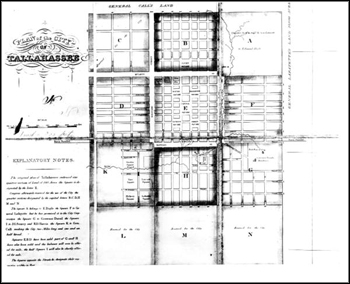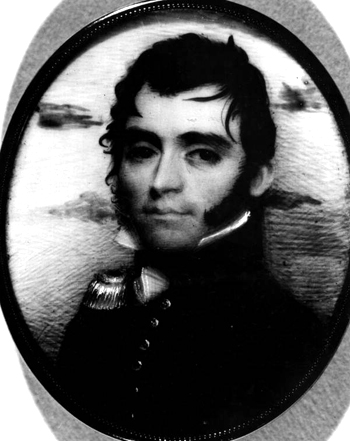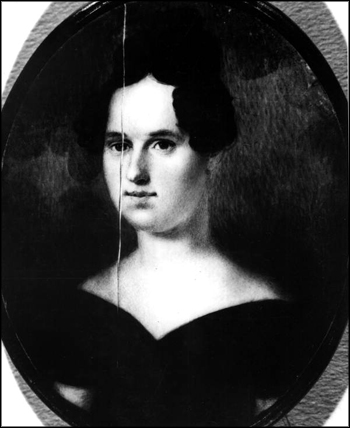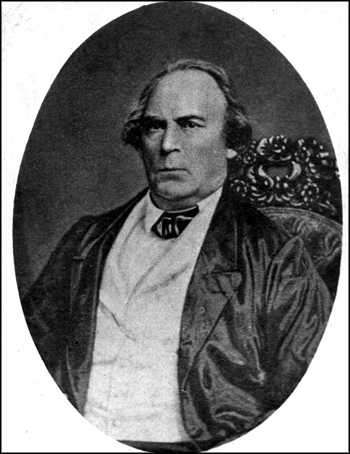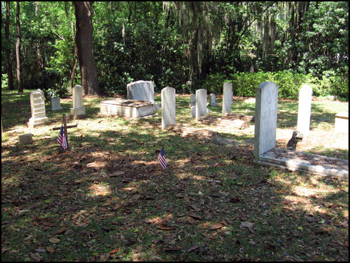Photo Exhibits
Photo exhibits spotlight various topics in Florida history, and are accompanied by brief text intended to place selected materials in historical context.
The Grove
The Legacy of the Call and Collins Families
In the mid-1820s, Richard Keith Call purchased 640 acres of land adjoining Tallahassee, the newly established capital of the Florida territory. By the early 1840s, Call had constructed an impressive mansion less than one mile north of the Capitol. This property, known today as The Grove, stands as a testament to Call and his descendants who worked tirelessly to retain family ownership of the mansion.
Richard Keith Call
The Grove is one of the most significant antebellum residences in Florida. Call and his descendants inhabited The Grove for nearly 200 years, attesting to the determination of the family and to the skilled craftsmanship demonstrated in the construction of the home.
Slave labor built the home, while Call oversaw its design and construction. Benjamin Chaires, a wealthy planter and resident of Tallahassee, and Jesse Willis, owner of the first brickyard in the territorial capital, assisted Call.
Much of the material used to build The Grove was likely harvested on-site. Bricks came from clay pits dug on the property and fired in specially built kilns. One pit was believed to be near what is now the intersection of North Monroe Street and Fifth Avenue. Pine and other trees harvested on Call's land became beams, trim pieces, and floorboards.
Because Call built the home under frontier conditions, some supplies, such as marble for the fireplace mantles, had to be imported.
Plan of the city of Tallahassee (1829)
Image Number: RC04157
"General Call's Land," noted near the top of the map, included 640 acres in 1829.
Balcony Lost at Sea
Call planned to build an iron balcony protruding from the south facade directly above the main entrance. In anticipation of the balcony, Call constructed a door on the second story and put iron brackets into place. However, the iron balcony was lost at sea en route to St. Marks, Florida. One version of the story claims pirates attacked the ship carrying the balcony and other furnishings for the home. Another blames bad weather for the shipwreck.
Richard Keith Call married Mary Letitia Kirkman in 1824 at Andrew Jackson's Tennessee home, The Hermitage. Call was a protégé of Jackson and served under the future president during the Creek War (1813-14) and First Seminole War (1817-18). Because her family disapproved of the marriage—particularly Call's desire to take Mary to the far-flung territory of Florida—Jackson gave Mary away at their wedding.
Mary Kirkman Call Dies in 1836
Mary Kirkman became ill as her husband prepared for service in the Second Seminole War. Call was aboard a transport vessel bound for Tampa when he learned that she did not have long to live. He left the ship and the troops under his command in Apalachee Bay and rushed back to The Grove.
When Call arrived, his wife had already passed away. According to Call's daughter, Ellen Call Long, her father rode his horse so furiously the day of her mother's death that the animal died of exhaustion as he approached the family home.
Sadly, all but two of the Call children succumbed to disease during childhood. Richard, Mary Kirkman, and several of their children are buried in the family cemetery north of the main house at The Grove.
Richard Keith Call (ca. 1820s)
Image Number: GV000641
Mary Letitia Kirkman Call (ca. 1820s)
Image Number: GV000825
Planter and Politician
Richard Keith Call was a leading figure in territorial Florida and during the early statehood period. Call served two separate terms as territorial Governor (1836-39; 1841-44), was a founding member of St. John's Episcopal Church in Tallahassee, and greatly influenced the sale and distribution of public lands in the territory. Throughout Call's political career, The Grove was a social hub for Florida's elected officials and business community.
Call acquired significant property in Leon County. By 1840, he owned over 60 slaves, 6,000 acres of land, and city lots valued at $20,000. According to Leon County tax records for 1860, Call held 118 slaves in bondage, making him one of the largest slave owners in the area on the eve of the Civil War.
In addition to real estate, Call invested in various business ventures, including a brickyard and railroads. He helped found and finance the Tallahassee Railroad Company, which built the first rail lines in the territory from Tallahassee to St. Marks.
Richard Keith Call (ca. 1840)
Image Number: GV013585
Call served two separate terms as territorial Governor (1836-39 and 1841-44).
Call owned two plantations, The Grove, near town, and Orchard Pond, near Lake Jackson. Limited agricultural activities took place at The Grove. After Mary's death, Call focused on his Orchard Pond property and other investments. He wrote to Ellen Kirkman, Mary Call's mother, in 1846: "I spend my time principally on the plantation, in which I take great interest," adding, "I have a large crop." (See Call's letter to Kirkman.) Call's plantations produced 167 bales of cotton in 1860.
Ellen Call Long Takes Ownership of The Grove in 1851
Ellen Call Long, Richard and Mary Kirkman's oldest daughter, took control of The Grove in 1851. For the next decade Call lived at his Lake Jackson plantation, Orchard Pond, until moving to The Grove in about 1860 as his health deteriorated.
When Florida voted to secede from the Union on January 10, 1861, Call stood on the steps of The Grove wielding a cane high in the air and proclaimed to the secessionists: "You have opened the gates of hell, from which shall flow the curses of the damned which shall sink you to perdition."
Call was a unionist, but certainly not an abolitionist. He believed firmly in the institution of slavery and argued for the superiority of the white race. In a letter to John S. Littell in February 1861, Call referred to African slaves as "wild barbarian[s], to be tamed and civilized by the discipline of slavery." (See Call's letter to Littell.)
Call wrote to the editor of the Tallahassee Sentinel in November 1860 about the "perversion" of the Declaration of Independence by northern Republicans who sought to extend equal rights to African slaves. Call declared, "Can anyone doubt… [equality] was intended by our fathers to apply only to the white man, to our own Anglo Saxon race?" (See Call's letter to Hart.)
Richard Keith Call's headstone in the family cemetery at The Grove
Image Number: GV000446
Family cemetery at The Grove (2011)
Image Number: DG00383

 Listen: The Gospel Program
Listen: The Gospel Program